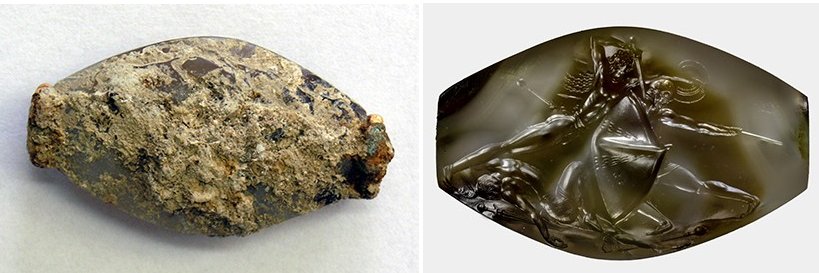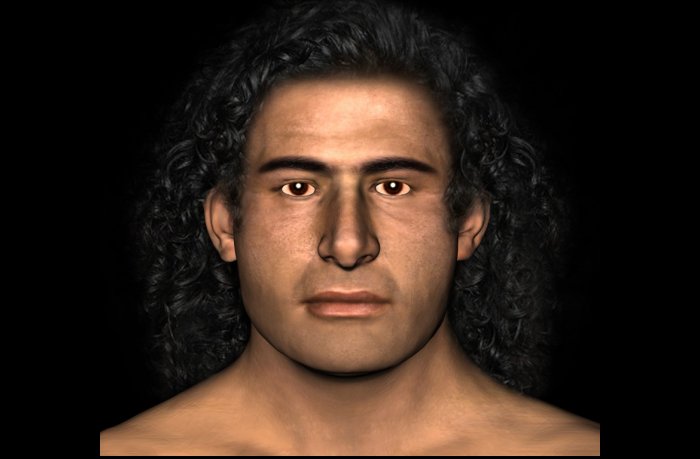Rare Minoan Sealstone Is A Miniature Masterpiece Unearthed In 3,500-Year-Old Tomb Of Powerful Mycenaean Warrior
A. Sutherland - AncientPages.com - A rare Minoan sealstone in the treasure-laden tomb of a Bronze Age Greek warrior has been discovered by University of Cincinnati archaeologists.
The grave itself - located in an olive grove near the ancient city of Pylos was discovered in 2015 by Jack L. Davis and Sharon R. Stocker, archaeologists at the University of Cincinnati who had excavated the site for more than 25 years.
The 3,500-year-old tomb belonged to a powerful Mycenaean warrior or priest buried around 1500 BC in southwest Greece. In the undisturbed and intact tomb, there were found four gold signet rings that have challenged accepted wisdom among archaeologists about the origins of Greek civilization.
Left: The limestone-encrusted sealstone was discovered lying face-down near the right arm of the Griffin Warrior. Courtesy of The Department of Classics, University of Cincinnati; Right: Due to the seal's small size and veining on the stone, many of the miniature details are only clearly visible via photomicroscopy. Courtesy of The Department of Classics, University of Cincinnati
After this discovery about a year later, excavations revealed another treasure, the so-called “Griffin Warrior”, an intricately carved gem, or sealstone, one of the finest prehistoric masterpieces of miniature Greek art ever discovered.
The “Pylos Combat Agate” that comes from tomb of the Griffin Warrior, which was hailed as the most spectacular archaeological discovery in Greece in more
Dig leaders Shari Stocker, a senior research associate in UC's Department of Classics, and Jack Davis, the university's Carl W. Blegen professor of Greek archaeology and department head said that it took a year of conservation works, and finally the seal revealed all its intricate details and the fierce prehistoric hand-to-hand battle.
An enlarged drawing of the stunningly detailed combat scene captured on an agate sealstone discovered by the University of Cincinnati's Sharon Stocker and Jack Davis. Tina Ross/Courtesy Department of Classics, University of Cincinnati. Color illustration/Ben Gardner, UC Creative Services
Davis and Stocker also said the Pylos Combat Agate’s craftsmanship and exquisite detail make it the finest discovered work of glyptic art produced in the Aegean Bronze Age. Some of the details on the sealstone are only a half-millimeter big.
“What is fascinating is that the representation of the human body is at a level of detail and musculature that one doesn’t find again until the classical period of Greek art 1,000 years later,” explained Davis. “It’s a spectacular find.”
The miniature masterpiece depicts a victorious warrior who, having already vanquished one unfortunate opponent sprawled at his feet, now turns his attention to another much more formidable foe, plunging his sword into the shielded man’s exposed neck in what is sure to be a final and fatal blow.
The scene conjures the sweeping and epic battles, larger-than-life heroes and grand adventures of Homer’s “The Iliad,” the epic Greek poem that immortalized a mythological decade-long war between the Trojan and Mycenaean kingdoms.
Left: The seal artist's attention to detail and use of stylized faces make the Pylos Combat Agate one of the finest works of prehistoric Greek art ever discovered. Courtesy of The Department of Classics, University of Cincinnati; Right: Many of the seal’s details, such as the intricate weaponry ornamentation, become clear only when viewed via photomicroscopy. Courtesy of The Department of Classics, University of Cincinnati
While the researchers can’t say that the image was intended to reflect a Homeric epic, the scene undoubtedly reflects a legend that was well known to Minoans and Mycenaeans, said Stocker.
The seal – most probably made on Crete - and other burial riches found within the tomb suggest that the man, known as the Griffin Warrior after the mythical animal depicted in his grave, was buried around 1450 BC.
See also:
Sophisticated Lenses Of Minoans Discovered In The Sacred Idaion Cave
Minoans: Mysterious, Advanced And One Of The Oldest Bronze Age Civilizations Of Europe
Genetic Mystery Solved: Ancient DNA Reveals Greeks Descended From The Minoans And The Mycenaeans
He held a respected position in Mycenaean society in times when the Minoan civilization of Crete was being transferred to cities of the Greek mainland.
An expert on Aegean art at the University of Vienna, Fritz Blakolmer, said that the sealstone is a miniature copy of a much larger original, probably a stucco-embellished wall painting like those found at the Palace of Knossos on Crete.
According to Blakolmer, the artist created this seal and used a magnifying glass, even though none has been found, and dismissed the possibility that people of that era had sharper eyesight than today.
In the spring of 2016, a UC-based team made a rich and rare discovery of an intact, Bronze Age warrior’s tomb dating back to about 1500 B.C. in the Pylos region of Greece. The Greek Culture Ministry declared the find the “most important to have been discovered [in continental Greece] in 65 years” by the Greek Culture Ministry.
The tomb revealed a remarkably intact skeleton, which UC researchers dubbed the “Griffin Warrior” for the discovery of an ivory plaque adorned with a griffin — a mythical beast with the body of a lion and the head and wings of an eagle — buried with him.
The 3,500-year-old shaft grave also revealed more than 3,000 objects arrayed on and around the warrior’s body, including four solid gold rings, silver cups, precious stone beads, fine-toothed ivory combs and an intricately built sword, among other weapons.
Written by - A. Sutherland - AncientPages.com Senior Staff Writer
Expand for referencesreferences
More From Ancient Pages
-
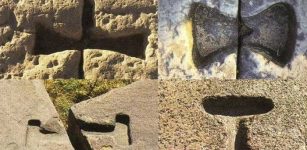 Mystery Of Ancient Metal Clamps – Advanced Lost Technology Modern Science Still Cannot Explain
Ancient Technology | Jul 31, 2020
Mystery Of Ancient Metal Clamps – Advanced Lost Technology Modern Science Still Cannot Explain
Ancient Technology | Jul 31, 2020 -
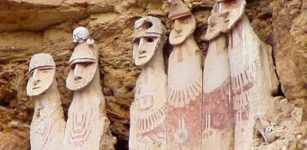 Genetic Evidence Reveals: Chachapoyas “Cloud People” Resistant To Inca Rule
Archaeology | Dec 14, 2017
Genetic Evidence Reveals: Chachapoyas “Cloud People” Resistant To Inca Rule
Archaeology | Dec 14, 2017 -
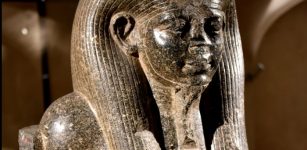 Hapi: Early Egyptian God Of The Nile And Bringer Of Fertility, Abundance And Life
Egyptian Mythology | Mar 20, 2019
Hapi: Early Egyptian God Of The Nile And Bringer Of Fertility, Abundance And Life
Egyptian Mythology | Mar 20, 2019 -
 Evidence Ancient Civilizations Had Knowledge About Planets In Our Solar System Thousand Years Ago
Featured Stories | Mar 10, 2021
Evidence Ancient Civilizations Had Knowledge About Planets In Our Solar System Thousand Years Ago
Featured Stories | Mar 10, 2021 -
 Goddess Huitaca – Moon Goddess Of Intoxication, Joyful Life And Unlimited Pleasures In Muisca Mythology
Featured Stories | Mar 14, 2021
Goddess Huitaca – Moon Goddess Of Intoxication, Joyful Life And Unlimited Pleasures In Muisca Mythology
Featured Stories | Mar 14, 2021 -
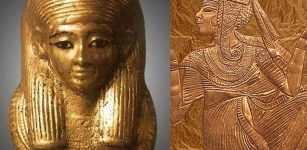 Mystery Of Dakhamunzu And The Zannanza Affair – Was Queen Ankhesenamun Hiding Her Identity?
Featured Stories | Feb 1, 2019
Mystery Of Dakhamunzu And The Zannanza Affair – Was Queen Ankhesenamun Hiding Her Identity?
Featured Stories | Feb 1, 2019 -
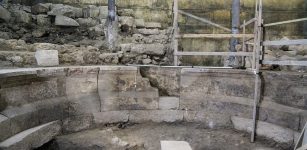 Roman Theater Unearthed After 1,700 Years Near Western Wall In Jerusalem
Archaeology | Oct 19, 2017
Roman Theater Unearthed After 1,700 Years Near Western Wall In Jerusalem
Archaeology | Oct 19, 2017 -
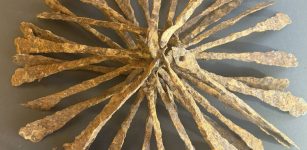 Rare Viking Age Treasure Found By Woman Cleaning The House
Archaeology | Apr 20, 2023
Rare Viking Age Treasure Found By Woman Cleaning The House
Archaeology | Apr 20, 2023 -
 Ashvins: Vedic Twin Gods Of Medicine And Healing Were Skilled Surgeons
Featured Stories | Feb 1, 2019
Ashvins: Vedic Twin Gods Of Medicine And Healing Were Skilled Surgeons
Featured Stories | Feb 1, 2019 -
 Beware Of The Shapeshifting Gaelic Bodach Who May Be Difficult To Trick
Christmas Traditions | Dec 3, 2021
Beware Of The Shapeshifting Gaelic Bodach Who May Be Difficult To Trick
Christmas Traditions | Dec 3, 2021 -
 Mysterious Hockomock Swamp – A Vortex To The Unknown In Massachusetts?
Featured Stories | Oct 9, 2019
Mysterious Hockomock Swamp – A Vortex To The Unknown In Massachusetts?
Featured Stories | Oct 9, 2019 -
 Did Ancient Romans Reach The Americas Long Before Columbus?
Civilizations | May 19, 2021
Did Ancient Romans Reach The Americas Long Before Columbus?
Civilizations | May 19, 2021 -
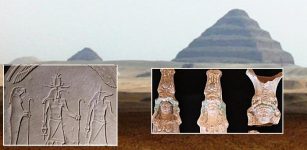 First Cemetery Dated To Roman Period Discovered In North Saqqara, Egypt
Archaeology | Nov 12, 2019
First Cemetery Dated To Roman Period Discovered In North Saqqara, Egypt
Archaeology | Nov 12, 2019 -
 Ruins Of The Mysterious Kingdom Of Guge That Suddenly Vanished Overnight
Civilizations | Apr 10, 2021
Ruins Of The Mysterious Kingdom Of Guge That Suddenly Vanished Overnight
Civilizations | Apr 10, 2021 -
 300 BC Mummy Shroud Fragment In NZ Finds Match In US
Archaeology | Jul 18, 2021
300 BC Mummy Shroud Fragment In NZ Finds Match In US
Archaeology | Jul 18, 2021 -
 First Dream Of The New Year – Japanese Hatsuyume Tradition
Ancient Traditions And Customs | Jan 1, 2021
First Dream Of The New Year – Japanese Hatsuyume Tradition
Ancient Traditions And Customs | Jan 1, 2021 -
 Jolabokaflod – Iceland’s Wonderful Christmas Book Flood Tradition – Exchange Books As Christmas Eve Presents And Spend The Evening Reading
Ancient Traditions And Customs | Dec 21, 2017
Jolabokaflod – Iceland’s Wonderful Christmas Book Flood Tradition – Exchange Books As Christmas Eve Presents And Spend The Evening Reading
Ancient Traditions And Customs | Dec 21, 2017 -
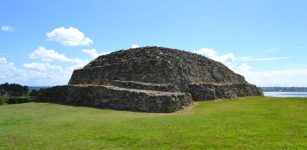 Cairn de Barnenez: Europe’s Largest Megalithic Mausoleum Is One Of The World’s Oldest Man-Made Structures
Featured Stories | Nov 1, 2018
Cairn de Barnenez: Europe’s Largest Megalithic Mausoleum Is One Of The World’s Oldest Man-Made Structures
Featured Stories | Nov 1, 2018 -
 Robert The Bruce: Mighty King Of Scots And Great Scottish Hero
Featured Stories | Oct 13, 2016
Robert The Bruce: Mighty King Of Scots And Great Scottish Hero
Featured Stories | Oct 13, 2016 -
 Mysterious Scottish Stone Circles On Orkney Were Used To Something Very Different Than Previously Thought
Archaeology | Sep 24, 2017
Mysterious Scottish Stone Circles On Orkney Were Used To Something Very Different Than Previously Thought
Archaeology | Sep 24, 2017

